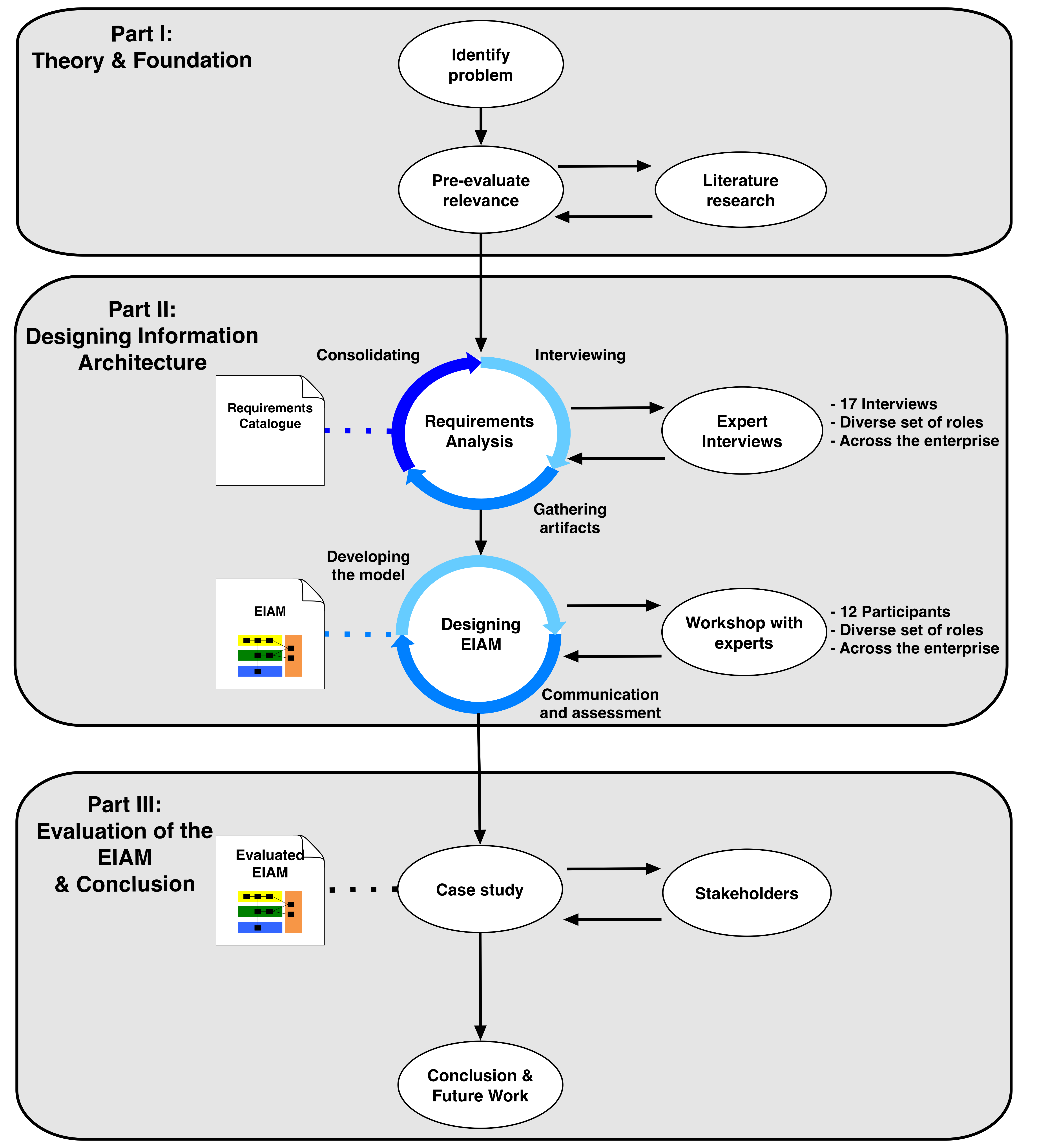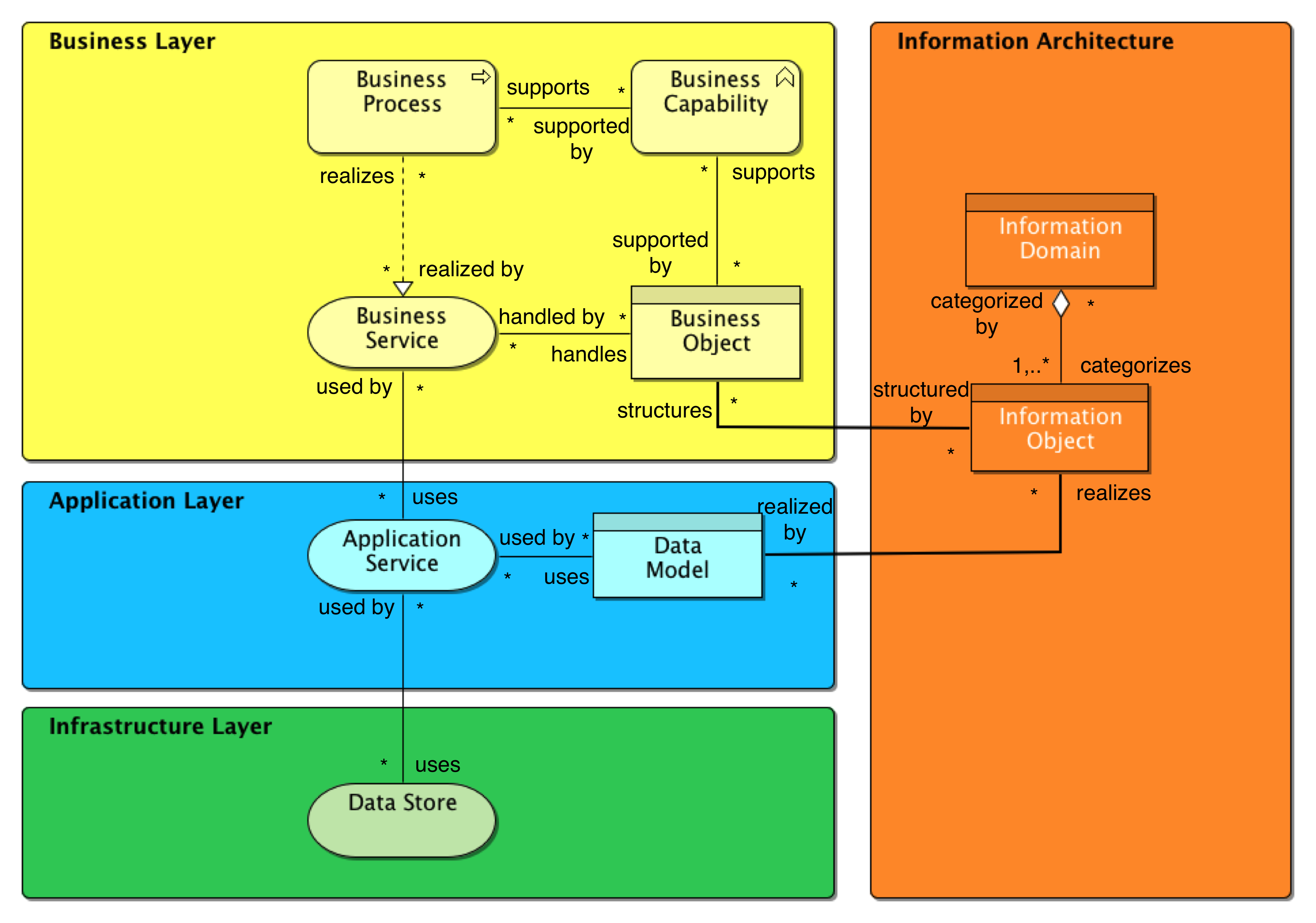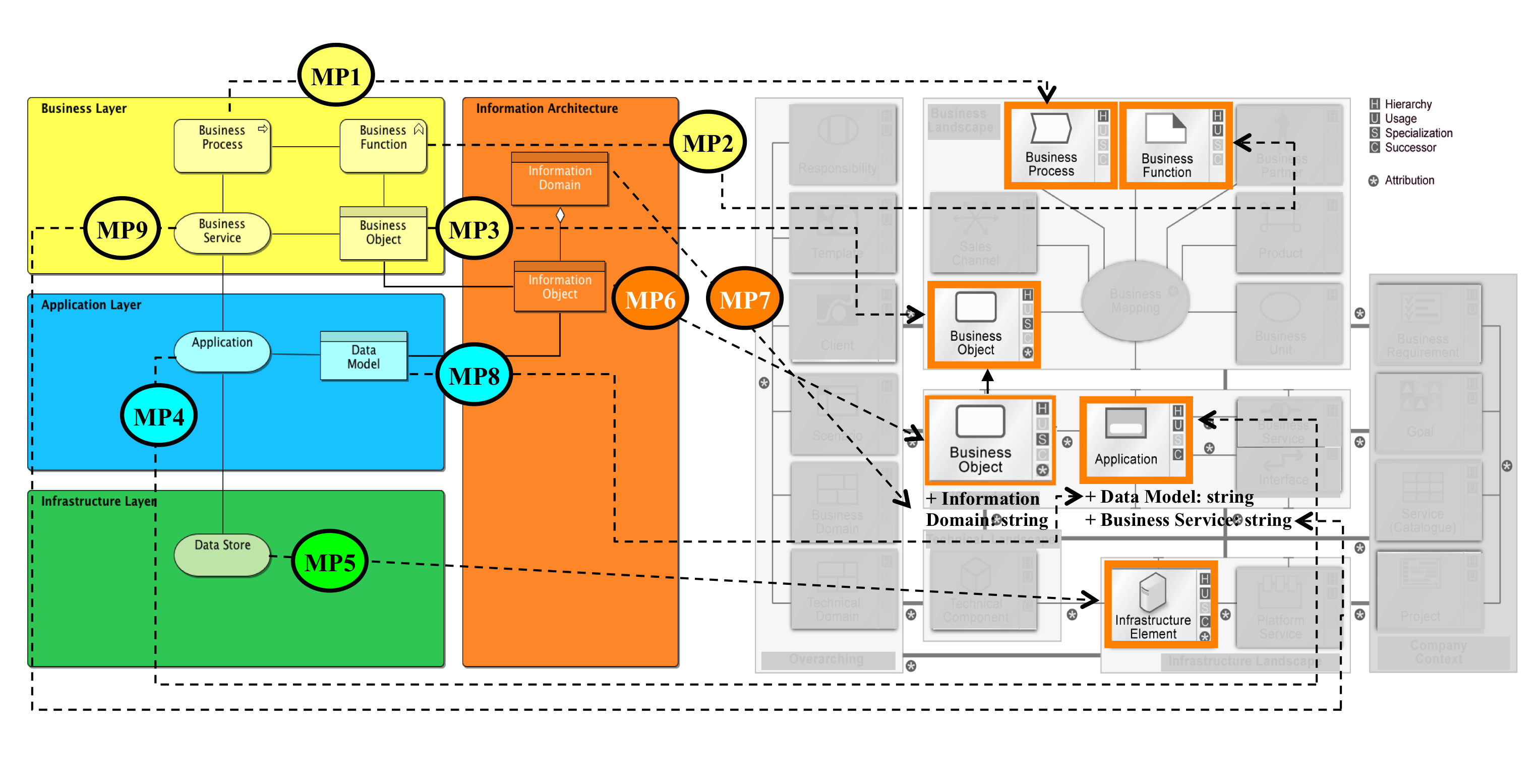Current researches have shown that managing and organizing information effectively is heavily increasing in significance and has become a key discipline for the insurance industry. One reason of this development is that information itself has evolved to a strategic asset. However, an issue, which most companies are currently facing is that information is still organized heterogeneously across business units and is therefore in most cases non-transparent to the overall enterprise architecture. This deficit leads to lower business agility and decelerates the business decision process due to operational and analytical ineffectiveness. Information Architecture (IA) explicitly addresses the issue of information interoperability; however the area of Information Architecture is still an immature area and there are potential research opportunities in order to elaborate the relationship between Enterprise Architecture Management Frameworks and Information Architecture in greater detail.
The intention of this master thesis is to create an organization-specific Information Architecture Model to get insights into the relationship between data resources, applications and the user interface. However, in business, transparency is more seen as the key enabler to fulfill business objectives, like reducing time-to-market of insurance products, identify and mitigate business risks (etc. IT Security, Business Continuity) and reducing operational costs through homogenization and analysis of the application landscape. These three goals have become critical success factors. First, offering modularized and customized insurance products are the key capabilities for innovation and further growth in a highly competitive market space. Furthermore an efficient cost structure combined with a stable environment are essential dimensions for higher operational profit and supports the insurer to act as trusted partner in order to reach long term goals. These three factors are also recognized as the triangle of success and is reflected in the overall business strategy and corporate culture. This master thesis will tackle these goals in two ways. The first goal is an analysis of Enterprise Architecture Management (EAM) Frameworks due to their Information Architecture capabilities in order to provide researchers a starting point for further investigations. The second goal is to collect and elaborate guidelines and principles for Information Architecture and a Information Architecture Model according to domain-specific requirements in order to create business value through transparency and guidelines for future initiatives.
After a theoretical foundation the author will do researches on current Enterprise Architecture Management Frameworks with focus on their Information Architecture capabilities. The results will lead to a comprehensive set of state-of-the-art principles and guidelines for designing Information Architecture in a global insurance company. The second part will include requirements and a collection of best practices from an expert group in order to perform a domain-specific analysis on current EAM Frameworks. The outcome will be an verified requirements catalogue for Information Architecture within the company. In the third step the author will project the results in order to design an Information Architecture meta-model, which will reflect the expert-based requirements and implement possible improvements from an author’s perspective. In a following step the meta-model will be validated through a derivation to fulfill an industry specific use case. The results will validate the previously developed meta-model and will show practitioneers how artifacts could be reused. In the last step the author the Information Architecture implemented in a tool in order to show that result can be operationalized and support further investigations. At the end the author will provide a summary of achieved goals combined with an outlook of further developments and research areas.

The outcome of this master thesis can be separated into several artifacts, which will help to achieve the previously explained goals. The following artifacts will be delivered:


Buckl, S., Matthes, F., Schneider, A. W., and Schweda, C. M. (2013). Pattern-based design research–an iterative research method balancing rigor and relevance. In Design Science at the Intersection of Physical and Virtual Design, pages 73–87. Springer.
Hanschke, I. (2009). Strategic IT Management: A Toolkit for Enterprise Architecture Manage- ment. Springer-Verlag.
Hevner, A. R., March, S. T., Park, J., and Ram, S. (2004). Design science in information systems research. MIS quarterly, 28(1):75–105.
Krcmar, H. (2005). Informationsmanagement. Springer London, Limited.
Krogstie, J. (2002). A semiotic approach to quality in requirements specifications. In Organizational Semiotics, pages 231–249. Springer.
Ladley, J. (2010). Making Enterprise Information Management (EIM) Work for Business: A Guide to Understanding Information as an Asset. Elsevier Science.
Lankhorst, M. (2009). Enterprise architecture at work: Modelling, communication and analysis. Springer.
Offermann,P.,Levina,O.,Schönherr,M.,andBub,U.(2009).Outlineofadesignsciencere- search process. In Proceedings of the 4th International Conference on Design Science Research in Information Systems and Technology, page 7. ACM.
Ross, J., Weill, P., and Robertson, D. (2006). Enterprise architecture as strategy: creating a foun- dation for business execution. Harvard Business School Press. Harvard Business School Publishing India Pvt. Limited.
The Open Group (2009). TOGAF Version 9. TOGAF series. Van Haren Pub.
Zachman, J. A. (1987). A framework for information systems architecture. IBM systems journal, 26(3):276–292.
| Name | Type | Size | Last Modification | Last Editor |
|---|---|---|---|---|
| EIAM_Comprehensive_Model_with_relationships_final_for_presentation.png | 1017 KB | 25.11.2013 | ||
| FINAL_Presentation_Joachim_Braun_25112013.pdf | 9 KB | 11.06.2014 Versions | ||
| Kick_off_Presentation_Joachim_Braun_24062013.pdf | 9 KB | 11.06.2014 Versions | ||
| Mapping_EIAM_to_Iteraplan_final.png | 726 KB | 25.11.2013 | ||
| MA_Joachim_Braun_11112013.pdf | 9 KB | 15.06.2015 Versions | ||
| Research_Approach_Masterthesis_v2.png | 1,11 MB | 24.11.2013 |